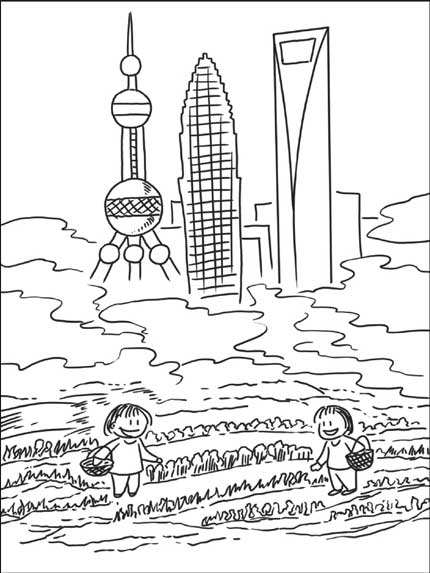Better cities, better and prettier underground garbage plants
- By Ni Tao
 0 Comment(s)
0 Comment(s) Print
Print E-mail Shanghai Daily, April 18, 2012
E-mail Shanghai Daily, April 18, 2012
 |
|
[By Zhou Tao/Shanghai Daily] |
A few years ago, a government plan to build a garbage incinerator close to residential areas in Panyu District in Guangzhou City triggered a furor and the plan was scrapped due to strong opposition.
Building solid waste disposal plants near or inside cities has since been anathema in urban planning. But here in Shanghai, that's exactly where some planners would like to place such a facility.
Another eggheads' pipe dream, you might say, but Li Kexin is convinced that a downtown trash facility is the first step toward leveraging what he calls the "unit city" development strategy. Li is a senior local political adviser and head of the Low-Carbon City Research Center of Shanghai Advanced Research Institute, jointly established by the Municipal Government of Shanghai and theChinese Academy of Sciences.
A unit city is made up of areas that are self-sufficient in localized garbage treatment and energy generation. In addition, people live and work largely within their confines, rendering obsolete long and arduous commutes between workplace and home.
Usually, urban garbage is carted away and dumped in faraway landfills, but limited land supply means this disposal method is unsustainable. Shanghai produces about 2,000 tons of trash a day, which makes its way to Laogang in Pudong, site of the city's biggest landfill, Li told Shanghai Daily.
However, as Laogang is overburdened, the city is hatching plans to build another landfill, maybe more, in its suburbs. This is ferociously resisted by local residents on public health grounds. And rightly so, asked Li: why can garbage produced in Huangpu District be dumped in Jiading, and for that matter, Jing'an's be hauled to Jinshan?
In response, maybe we can build an underground trash reprocessing plant in the expanse of People's Square opposite the municipal government headquarters, Li said.
"Many people ridicule my suggestion as absurd, but 10 years from now, they won't scoff anymore. It may well become a reality," he said.
A downtown trash facility isn't such an eyesore as many would have thought. Quite the opposite. It would be the best advertisement of Shanghai's trash disposal technology. After all, who would risk putting a scrap yard right under the mayor's nose if it's squalid and stinks?
Besides, garbage can be recycled and reprocessed for human use. "I often say the assertion that 'garbage is a resource dumped at wrong places' is wrong. What's really wrong is the location where we choose to have a disposal plant," Li said.
Li said he got this audacious idea from a recent visit to Tokyo, Japan, where he was stunned to find a corner of a park converted into a rubbish disposal facility, so beautifully constructed that it looked like a fairy tale palace, with not a whiff of stench. Later he learned that Tokyo was forced to handle its trash locally following protests from adjacent smaller cities against becoming the metropolis' junk fields.
For Li, utilization should come before disposal, and this principle applies to rainwater as well, which is simply discharged into rivers - a sheer waste of an otherwise useful resource. Why not make urban roads water-permeable, so that rainwater can replenish the aquifer, rather than threaten the oft-overwhelmed urban sewage system?






Go to Forum >>0 Comment(s)